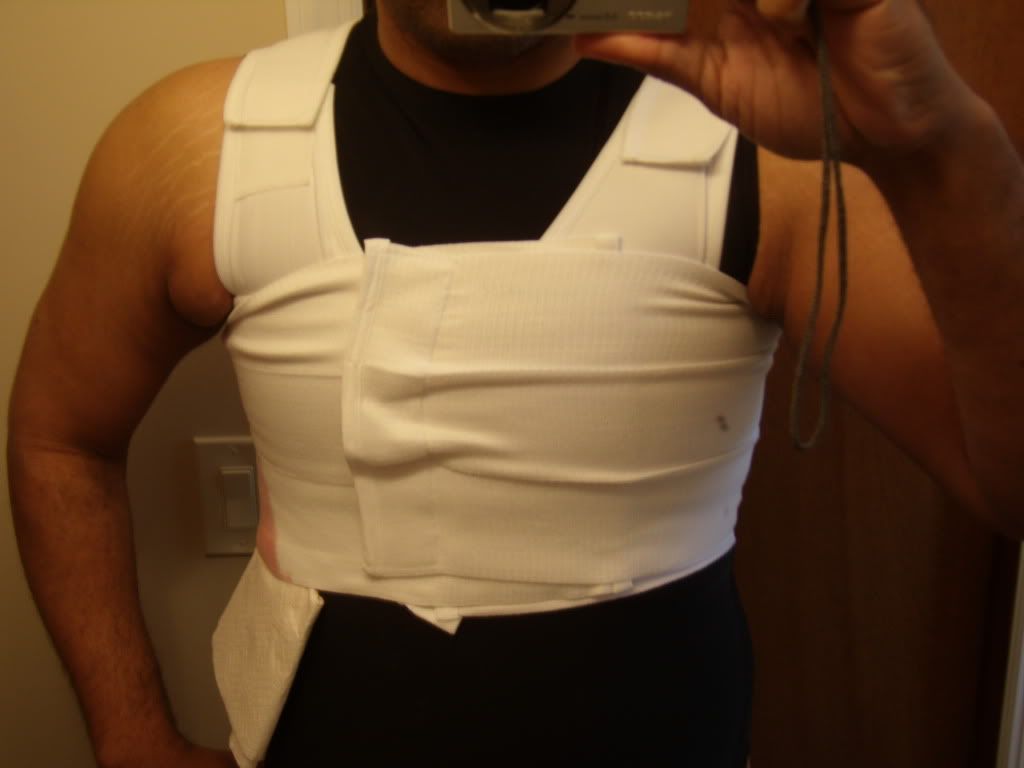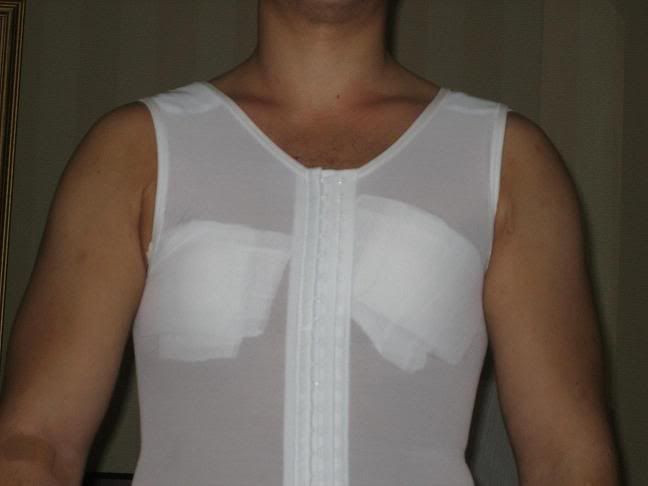Again, thank you very much for all your opinions doctors, I really appreciate it. Now about the timing for vest stage 2, problem is I'm not from US, I'm from Europe, so my surgeon is not familiar with this kind of vests(design veronique). Here in my country you can not get compression vests, you can only buy binders like one on the picture below. Logically, after surgery I wanted the best for my chest so I ordered vests from US. Unfortunately, my surgeon cannot advice me regarding vests stage 1 and stage 2 because she is not familiar with them and that's why I'm aksing here. I know you can't tell me the excat day when to start wearing vest stage 2, like 15 days after surgery it's time to wear it! I understand that. I'm just asking for approximately time frame when to start wearing it, like from 10-20 days after surgery or 20-30 days after surgery. To point out I had only liposuction and I can easily lift my arms overhead without any pain or discomfort. I'm now 13 days post op.
The second stage garment is for the scars. Scars that evolve under pressure do much better than scars without pressure. They used to be optional for my patients until my documentation demonstrated some patients were coming back with such minimal scars that could not be explained other than the second stage garment was offering so much more. At that point we made it mandatory for all of my patients. The garment however is only part of the dressing system. The sealed dressings means it is quite rare to see
any drainage for
any of my patients (except for the skin reduction cases with much longer scars that cannot be sealed easily without restricting easy breathing).
I believe in documentation of statements, that is why I put so much information on my site. Look at the very early after surgery images, sealed dressings. The first stage garment on the dressing alone. Let us compare systems with posts from this site:
Surgery with Dr. Jacobs (May 2010)
5 hours Post op


and
On March 3rd I had surgery with Dr. Bermant. I would type out the whole story of how it went and such but I pretty much had the same experience as "Tiredofit".


Now the post by the other surgeon's patient may or may not represent the norm. The many images on my website has to represent the norm by our Plastic Surgery Society ethical guidelines. That is why having such details about how patients evolve after surgery can be so valuable to understand why a surgeon prefers one method over another.
When a patient has bloody garments, the garment tends to get a foul odor quickly. A second first stage garment so that the other one could be washed and the drainage pads adds to the cost of the under garment, the garment, and the compression wrap. I do not like the variable pressure wrap. To produce consistent results I try to minimize variables. A variable pressure garment is just that another variable. Too much or too little pressure can be critical. Why add that complexity if I can achieve the bruising and swelling with a much simpler system?
But my point is in the longer term scar issues. That is what that second stage garment is for! In addition, once my patients can get out of the first stage garments, that second stage garment has been called by some of them a "stealth garment." It helps protect them, keeps them comfortable and yet does not have the bulk of the velcro straps, the hooks and eyes, and it looks and can be used as a regular bodybuilding or gym shirt. That anxiety reduction has been awesome.
Some have asked me about the extra gauze I am using under the compression garment. That gauze has 3 uses:
1: It protects the garment from the glue we use to seal the dressing on the chest to minimize the chance of blisters.
2: It fills in the void in the valleys of the chest that the garment does not apply pressure. As we were knocking out the swelling and documenting what our patients were achieving, I noted a pattern. The valleys under the muscles and between the muscles had more swelling and bruising than the regions that the garments were effecting pressure. Fill those voids with gauze, restore pressure, and that last little amount of residual swelling went away. Of course such measures are of little value when the entire chest is swollen or for techniques that result in swelling that increases after surgery. For my patients, I felt those were not the best options. That is why the valley gauze was added. The pictures shown here are from back before this modification had been added. That gauze in those was still in the method 1 application pattern.
3: For some patients, healing nerves were more sensitive and the gauze just felt better against the skin than the garment fabric.
Hope this helps,
Michael Bermant, M.D.
